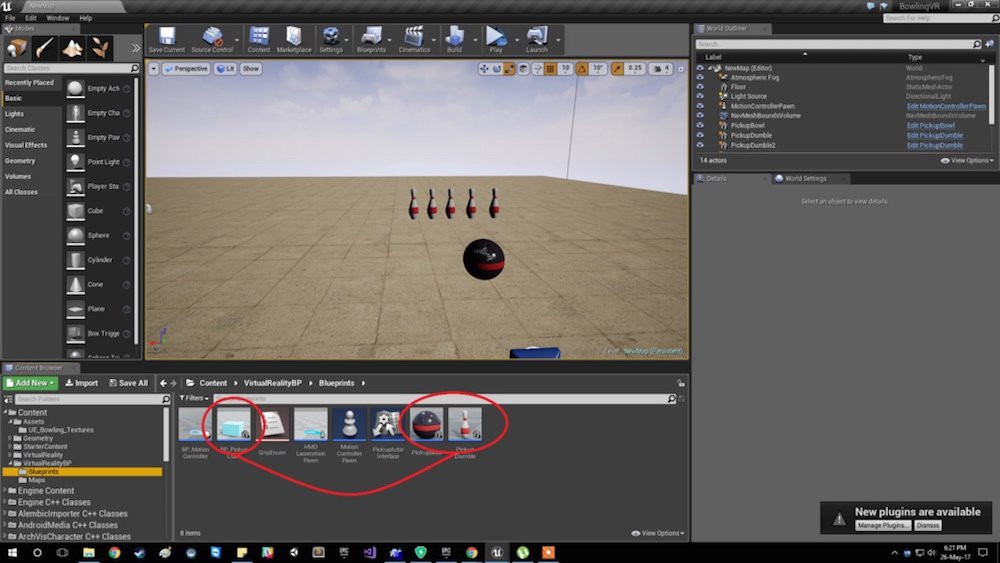Affordable VR-Controlled ‘Bartender’ Robotic Arm Can Be Operated From Anywhere
https://makerv2.webteractive.co/blog/affordable-vr-controlled-robotic-arm-can-be-controlled-from-anywhere
UK-based Extend Robotics has announced a successful trial of a VR (virtual reality)-based remote-controlled robot. Living up to its name, R:O:B: (for ‘robotically-optimised bartender’) has accurately poured pints of beer when being controlled by a remote human operator.
How to Make a VR Bowling Game in Unreal Engine, Part I
https://makerv2.webteractive.co/custom/projects/create-your-own-bowling-game-in-vr-using-motion-controllers
Learn how to make a bowling game in virtual reality. Be sure to bring your motion controllers!
How to Build a VR App in Unity for Beginners
https://makerv2.webteractive.co/custom/tutorial/how-to-build-a-vr-app-in-unity-for-beginners
Learn how to use Unity Editor to build a VR app and contents.
The HaptX Gloves: ‘Hands-on’ Haptic VR and How it Works
https://makerv2.webteractive.co/blog/the-haptx-gloves-hands-on-haptic-vr-and-how-it-works
For engineers, HMIs, particularly those in VR and AR, are becoming an increasingly relied-upon approach to the design and manufacture of products, especially in the automotive industry. But aside from the audiovisual benefits of immersive computing, the user experience ideally needs to be tactile, too; and this is where haptic wearables, such as HaptX Gloves, come in.
The Development of a New Moldable Nanomaterial Could Bring Thinner and Cheaper VR and AR Devices
https://makerv2.webteractive.co/blog/the-development-of-a-new-moldable-nanomaterial-could-bring-thinner-and-cheaper-vr-and-ar-devices
Virtual reality (VR) and augmented reality (AR) are no longer exclusive to video gaming. Although the early development of these technologies focused on this industry, VR and AR are now used for a broad range of other applications and use cases such as education, virtual conferences, and fashion.
Fighting for Future Dominance: AR vs. VR
https://makerv2.webteractive.co/blog/fighting-for-future-dominance-ar-vs.-vr
As the world continues to advance technologically, our concept of reality has evolved in lockstep. Hardware and software have combined to create immersive experiences beyond our normal perception.
Beyond Conventional E-Studies: Immersive Learning Opportunities for Electrical Engineers
https://makerv2.webteractive.co/blog/beyond-conventional-e-studies-immersive-learning-opportunities-for-electrical-engineers
Virtual reality and augmented reality (or VR and AR) are just two examples of human-machine interfaces (HMIs) that are integral to immersive learning. Using industry-focused simulations, such HMIs can educate both prospective and experienced electrical engineers for practical work—and ultimately help companies to safely and affordably take on engineering graduates.




